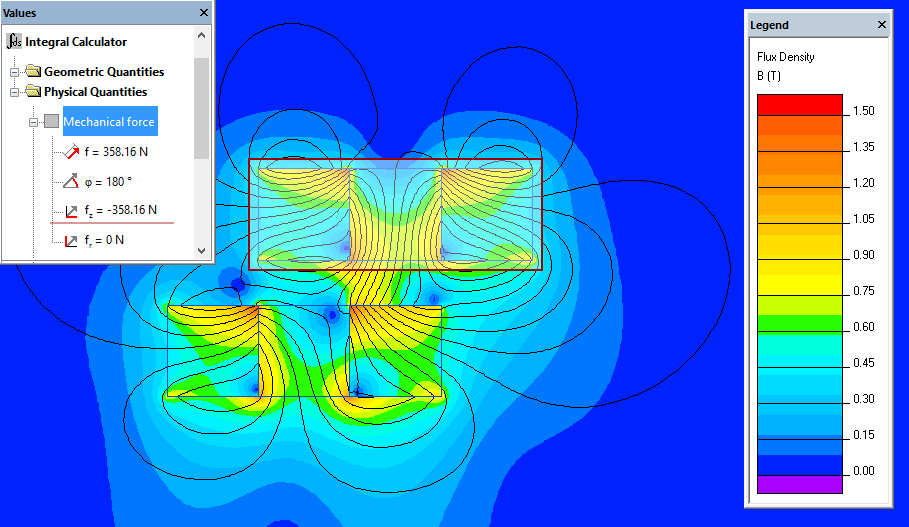Magnetic axial bearing
QuickField simulation example
This example showcases the passive magnetic bearing which operation is based on the radial and axial positioning of the shaft by magnetic forces. The bearing consists of inner and outer rings, which are Halbach assemblies. Magnetic axial bearing design requires calculation of the magnetic field and, as a result, the force acting between bearing rings as a function of rings mutual displacement.
Problem Type
Axisymmetric problem of DC magnetics.
Geometry
Given
Relative permeability of air μ = 1;
Shaft radius R = 20 mm;
Height of magnets H1 = H2 = 10 mm;
Length of magnets L = 10 mm;
Gap between inner and outer ring d = 5 mm;
Magnetic material N35.
Task
Obtain the magnetic field of the magnetic axial bearing and a force between the inner and outer ring as a function of their mutual displacement.
Solution
The magnetic axial bearing system is open as magnetic flux lines are closed in the surrounding media. Therefore, outward boundary for the calculation area may should be positioned at a sufficient distance from the bearing. The bottom boundary of the model is an axis of symmetry. For the accurate calculation of the field around the bearing a manual dense mesh is set, while at the boundary the mesh could be coarser.
The magnetization direction of magnets should be assigned correctly. Keep in mind that the bearing must provide radial positioning. It means that if the eccentricity between the inner and outer ring occurs for some reason, rings tend to align back into the concentric position.
An integration contour is created around the outer, static ring. This contour is close to the edge of the ring for better force calculation accuracy.
Moreover, this contour is perfect application for parametrization using the LabelMover utility. With LabelMover the dependency of axial force versus the displacement of inner ring may be automatically extracted from series of QuickField calculations.
Results
Axial force Fz as a function of ring axial displacement.
Magnetic flux density in the magnetic axial bearing at -10 mm displacement of inner rotor:

- Video: Magnetic axial bearing. Watch on YouTube
- View simulation report in PDF
- Download simulation files (files may be viewed using any QuickField Edition).